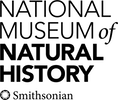Image of Steccherinum subcrinale (Peck) Ryvarden 1978

Description:
Slo.: vrsta bodika - Synonymy: Hydnum subcrinale Peck, Irpex subcrinalis (Peck) Saaren. & Kotir., Mycoleptodon kavinae Pilt, Bull. Odontia subcrinalis (Peck) Gilb., Steccherinum kavinae (Pilt) M.P. Christ. - Habitat: Old, mixed wood, Picea abies dominant; locally almost flat terrain, calcareous ground; in shade, fairly humid place; partly protected from direct rain by tree canopies; average precipitations 1.600-1.800 mm/year, average temperature 8-9 deg C, elevation 740 m (2.450 feet), Dinaric phytogeographical region. Substratum: on wood of a tree stump covered by mosses; in the final stage of disintegration; species undetermined but probably Picea abies or Abies alba. Place: North of Cerknica lake; SE of village Laze pri Gornjem jezeru; between hills marni gri, 768 m and Sovinek, 780 m, Notranjska, Slovenia EC. Comments: Steccherinum subcrinale is a loosely attached to its substratum, resupinate, effused teeth fungus. It can be distinguished from other Steccherinum species (in my region Steccherinum ochraceum and Steccherinum fimbriatum) by short, from (0.2)0.3 to 0.5(0.6) mm long cylindrical aculei (spines or teeth). Alternative species have pointed, conical (and mostly larger) 'spines'. The same seems true for similar species of genus Irpex. Steccherinum subcrinale also never forms shelf-like, small pilei but remains strictly resupinate. Steccherinum subcrinale is a rare species everywhere in Europe and denoted 'extremely rare' in Germany (Krieglsteiner 2000), Italy (Bernicchia 2010) and north Europe (Eriksson et al 1984). It is listed neither in Poler ed. 1998 nor in Ogris 2008 for Slovenia. Unfortunately, at the time I photographed this observation I was unaware what it might be and I didn't take samples to do microscopy and make exsiccate. Hence the determination remains uncertain although macroscopic traits from photos seem to fit quite good. Ref.: (1) G.J. Krieglsteiner (Hrsg.), Die Grosspilze Baden-Wrttembergs, Band 1, Ulmer (2000), p 332. (2) https://www.123pilze.de/DreamHC/Download/OckerResupinatStacheling.htm (accessed March 3. 2018) (3) L. Hagar, Ottova Encyklopedia Hb, Ottova Nakladatelstvi, Praha (2015) (in Slovakian), p 289. (4) A. Bernicchia, S.P. Gorjon, Cortitiaceaes .i., Fungi Europaei Vol.12., Edizioni Candusso (2010), p 631. (5) (x) A. Poler (ed.), Seznam gliv Slovenije (Checklist of Fungi of Slovenia), 2nd Ed., Assoc. of Mycol. Soc. of Slovenia (1998) (in Slovenian). (6) N. Ogris (ed.), Boletus Informaticus, Slovenian Forestry Institute, 2008 http://www.zdravgozd.si/bi_index.aspx (accessed March 3. 2018) (7) Eriksson, J.; Hjortstam, K.; Ryvarden, L., The Corticiaceae of North Europe. 7:1282-1449 1984) http://www.mycobank.org/BioloMICS.aspx?TableKey=14682616000000063&Rec=44436&Fields=All (accessed March 4. 2018)
Included On The Following Pages:
- Life (creatures)
- Cellular (cellular organisms)
- Eukaryota (eukaryotes)
- Opisthokonta (opisthokonts)
- Nucletmycea
- Fungi (mushrooms, lichens, molds, yeasts and relatives)
- Dikarya
- Basidiomycota (basidiomycete fungi)
- Agaricomycetes (Mushroom-Forming Fungi)
- Polyporales
- Meruliaceae
- Steccherinum
- Steccherinum subcrinale
This image is not featured in any collections.
Source Information
- license
- cc-by-nc-sa-3.0
- copyright
- 2018 Dr. Amadej Trnkoczy
- photographer
- Dr. Amadej Trnkoczy
- original
- original media file
- visit source
- partner site
- CalPhotos
- ID


